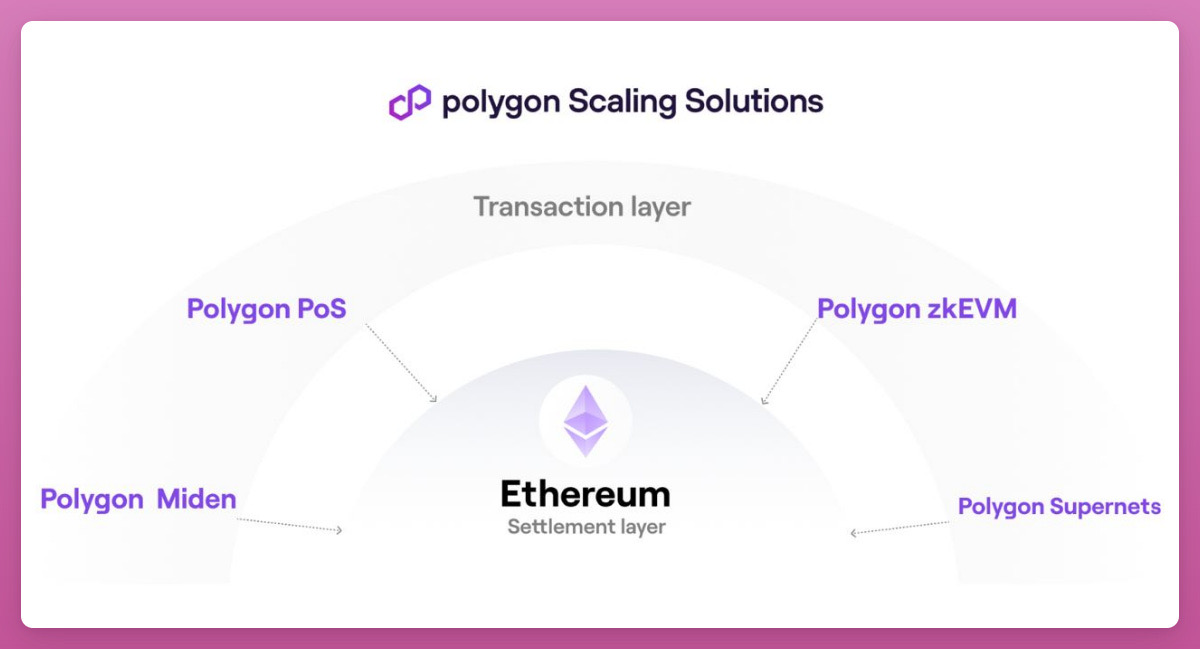This article comes from Substack, the original author: IGNAS | DEFI RESEARCH, compiled by Odaily translator Katie Kuo.

text
What is the significance of L1 in the L2 era?
This problem has been bugging me for weeks. I decided to reach out to the teams at Polygon, Solana, Avalanche, and others to get their perspective. Eventually I got in touch with Sanket, Polygon's Head of Growth, for an interview.
A few years ago, high Ethereum Gas fees made it too expensive to use Dapps on the mainnet. L2 solutions promise to scale Ethereum with faster transactions and cheaper fees. But as L2 grows, how will L1 evolve, and will it continue to provide value that L2 cannot?

This article will give the answer from the perspective of Polygon.
Other questions include:
What is the present and future role of the Polygon PoS chain?
How does Polygon zkEVM compare to zkSync?
What is Polygon's "Endgame"?
Q1 secondary title
Sanket:What is the significance of L1 (especially Polygon PoS Chain) in the L2 era?
Polygon, formerly known as Matic Network, launched in 2017 as a scaling solution for Ethereum. At the time, there were very few scalable solutions, Loom Network being the only other platform I can remember.
As the Ethereum scaling environment grew, Polygon expanded into a multi-chain scaling solution and acquired various products. Currently, Polygon PoS is a sidechain of Ethereum, the most widely used blockchain with thousands of Dapps. In fact, the definition of a sidechain or L2 has only recently become clear.

Ethereum has already won the L1 game as the settlement layer, while Ethereum's extended ecosystem includes L2 solutions such as Polygon, StarkWare, etc.
Ethereum is now moving from a B2C chain to a B2B chain, where high-value transactions will still use Ethereum as the settlement layer. On the other hand, all other transactions will leverage the security of Ethereum, and other layer tools (such as Polygon) will become the transaction layer.
Immutable zkEVM is an example of a specific use case chain optimized for all games on Web3.
Q2 secondary title
Sanket:Polygon is building various scaling solutions like Polygon Hermez, Avail, Edge, Nightfall, Miden, and Zero, and I'm curious why there are so many. Why not focus on just one solution? What is the main difference between them?
Initially, we started with single-chain sidechains on Ethereum, which is the most commonly used Ethereum scaling solution. However, we know this is not a long-term solution. Since zkEVM and other ZK solutions are new technologies, it can be difficult to know which approach is best. That's why we acquired several teams, including the Hermez, Mir Protocol, and Miden teams, each working on ZK with a different approach. Over time, these teams came together to develop the Polygon zkEVM, and we set a record, launching the product in 15 to 18 months. In fact, even Vitalik thinks it's 5 years from now.The problem is that people don't know what approach to take because there are multiple ways to build a ZK solution, lots of theory but no concrete action.
You don't know which horse will be the dark horse, and no one wants to take that risk, so Polygon opts for a "cast-a-net strategy" and actively builds various scaling solutions.
Polygon PoS Chain;
The product launch was accelerated due to the combined expertise of our acquired teams. Currently, Polygon has three main products:
Polygon zkEVM (a zkEVM-based L2 scaling solution with proof-of-validity, fully on-chain, and open-source);
Polygon Supernets (a framework that allows the creation of specialized blockchains for specific use cases).
There is also Polygon Miden for research on a Stark-based ZK virtual machine that will support non-EVM use cases.
To better understand what we offer, an analogy can be made to the evolution of the Internet with shared and dedicated servers.
Our shared chains (permission-free public chains) include Polygon PoS and zkEVM, while private chains (use-case specific chains) are created using the Polygon Supernets framework.
Shared chains address general use cases, while dedicated chains focus on specific needs, such as gaming and high-transaction applications.
secondary title
Sanket:Q3 What is the ultimate goal of Polygon now? Is it just about scaling Ethereum, or is there another mission or grand goal?
Our main goal is to scale Ethereum and expand its block space. Ethereum transactions consist of data and execution. By separating these two components, we can increase the capacity of Ethereum.
Most activity will take place at L2 while still maintaining the full security of Ethereum. This approach reflects the evolution of Ethereum’s scaling philosophy over the past five years.
secondary title
Sanket:Q4 Why do Dapps choose to build on Polygon zkEVM instead of zkSync Era? Both launched at the same time, and people are comparing the two.
The main reason is that we provide developers with an accessible experience. With our EVM equivalence, developers can simply redeploy their Ethereum contracts on zkEVM without any modifications. In contrast, zkSync requires compilation and other steps that may introduce security issues. We also optimized the "onboarding process" for developers, as demonstrated by our PoS solution.
Another key difference is performance. Our team has developed the world's fastest, most cost-effective prover, capable of generating proofs in less than two minutes. The prover is integrated with our Polygon zkEVM, making it the highest performing zkEVM.
On the other hand, zkSync's prover is a "blind box" without issuing a security audit report, which can easily lead to potential problems.
In the world of ZK, the prover is a key component that differentiates the platform. Prover optimization and efficiency are challenging and can make or break a platform. Polygon’s open-source proofs have influenced other platforms such as the ConsensSys zkEVM, which followed a similar path during its development.
It is worth mentioning that some aspects of zkSync, such as its documentation and lack of audit evidence, may appear to be too "hasty". Therefore, we believe that Polygon zkEVM provides a more developer-friendly and robust solution compared to zkSync Era.
secondary title
Sanket:Q 5 Cinneamhain Ventures partner Adam Cochran claimed in his Twitter that zkSync Era is better for three reasons: a clear path to a decentralized sequencer; the technology stack will not be generated every time Ethereum is upgraded Technical debt (technical debt: take shortcuts when writing code, the written code is obscure, redundant and repetitive, affecting subsequent development); the native account abstraction included in the protocol. What do you think of these points mentioned by Adam Cochran?
It's important to understand that this is all new technology. We shortened the time to market, but it's still new and needs time to optimize. Decentralization will one day reduce flexibility if something goes wrong, so we don't want to rush into decentralization. We first rolled out a feature chain. Virtually all current L2s have centralized sequencers. When building an ecosystem, you can't expect everything to be perfect on day one.
Account abstraction is still a new concept and we are working with partners like Stackup and Alchemy. The local native implementation takes time because we want to start a worker chain first. zkSync's statement about a clear path to decentralization isn't entirely accurate. We also have a clear path to decentralization, but it will take time.
As for account abstraction, we have acquired it through our partners and it will be available on the local network soon. In terms of technical superiority, we win on zkEVM with a frictionless development experience. As for the native account abstraction, we are also working on it.
We are very pragmatic and focused on scaling proven solutions. For example, our Polygon Bridge has reached $90 billion in transaction volume and has proven itself to be secure and stand the test of time. This is what we hope to achieve with zkEVM, to build a long-term solution down-to-earth.
secondary title
Sanket:Q 6 Why continue to support Polygon PoS? You said you had big things to do. Can you share what you're building and your vision for L1?The Polygon PoS chain will have a big upgrade.
We'll share more details at the end of the month. This will be a "mini-merge moment" for Polygon and will be a long-term solution for the existing 40,000 apps.
secondary title
Sanket:Q 7 Polygon's BD team is to be praised for bringing many Web2 partners to the blockchain. Can you share the secret to getting these big partners to build on Polygon?
There are no secrets. We are a pragmatic team focused on scaling viable solutions. A PoS chain might not be a long-term solution, but it works and it helped us get a lot of traction. We are able to fend off potential Ethereum competitors by providing an instant scaling solution. Our team members have been in this industry for a long time and we understand the needs of this industry.